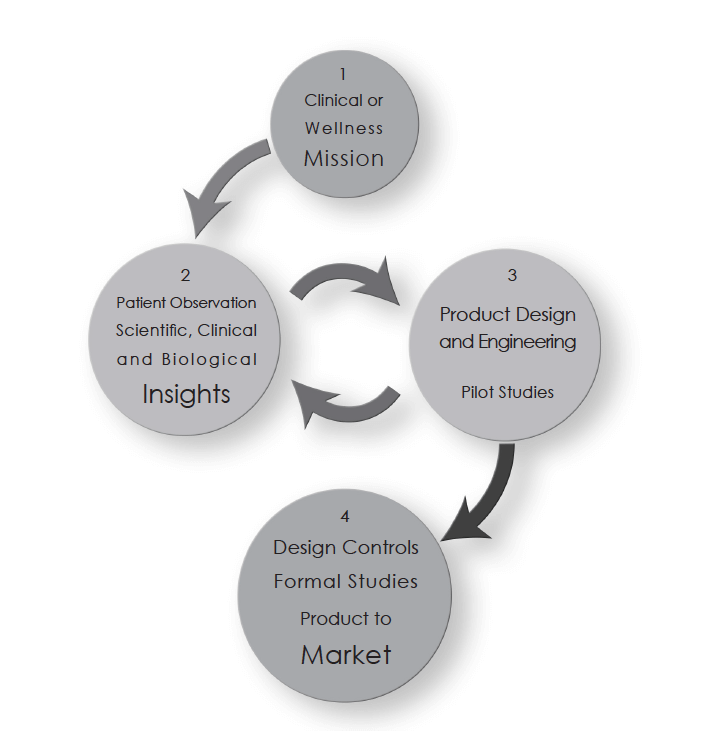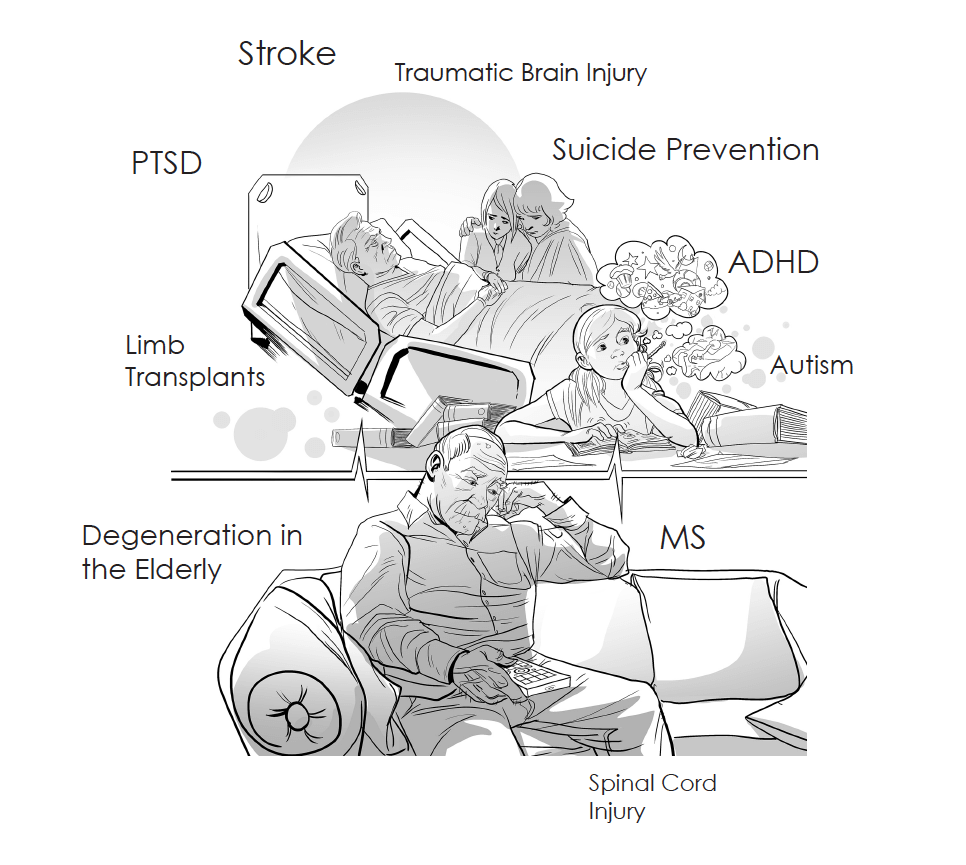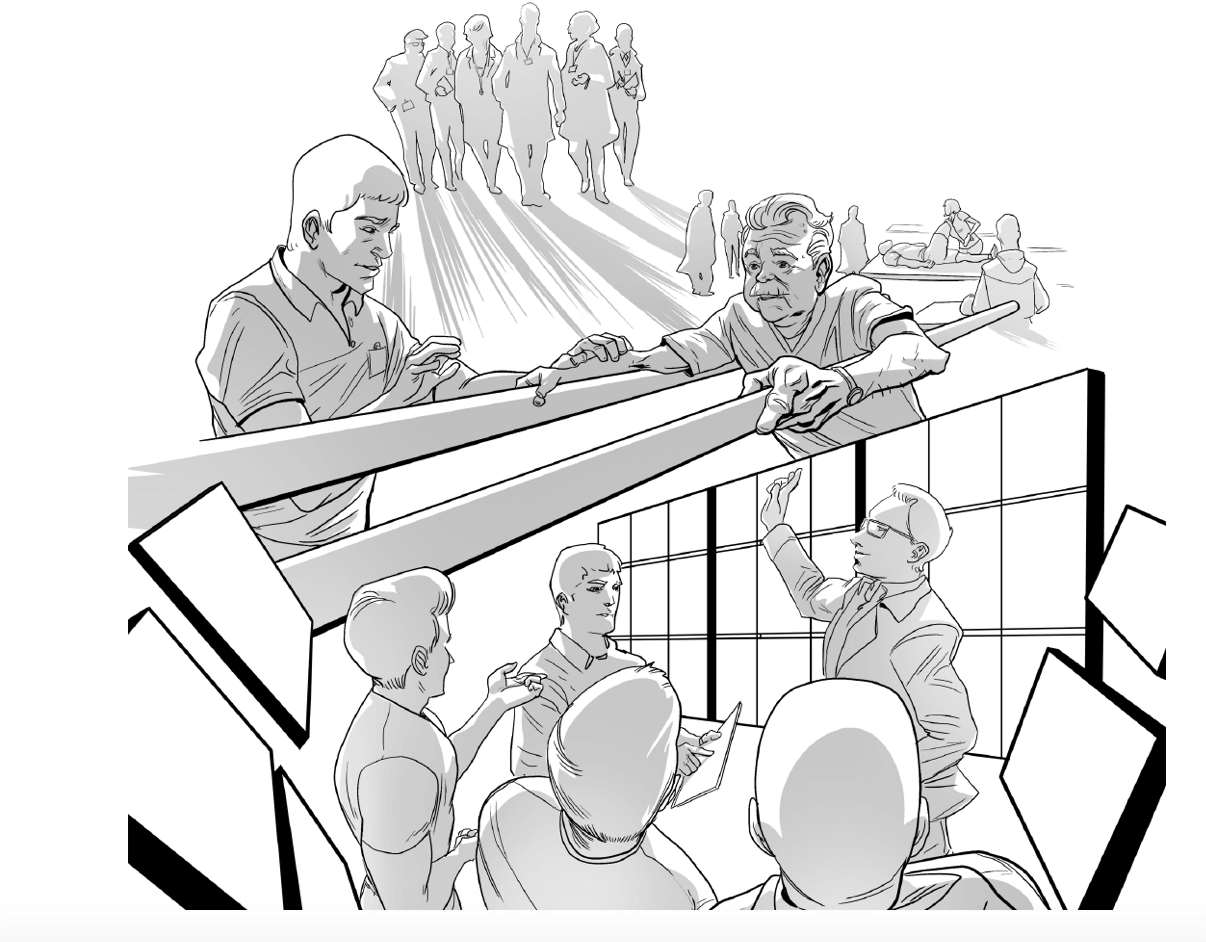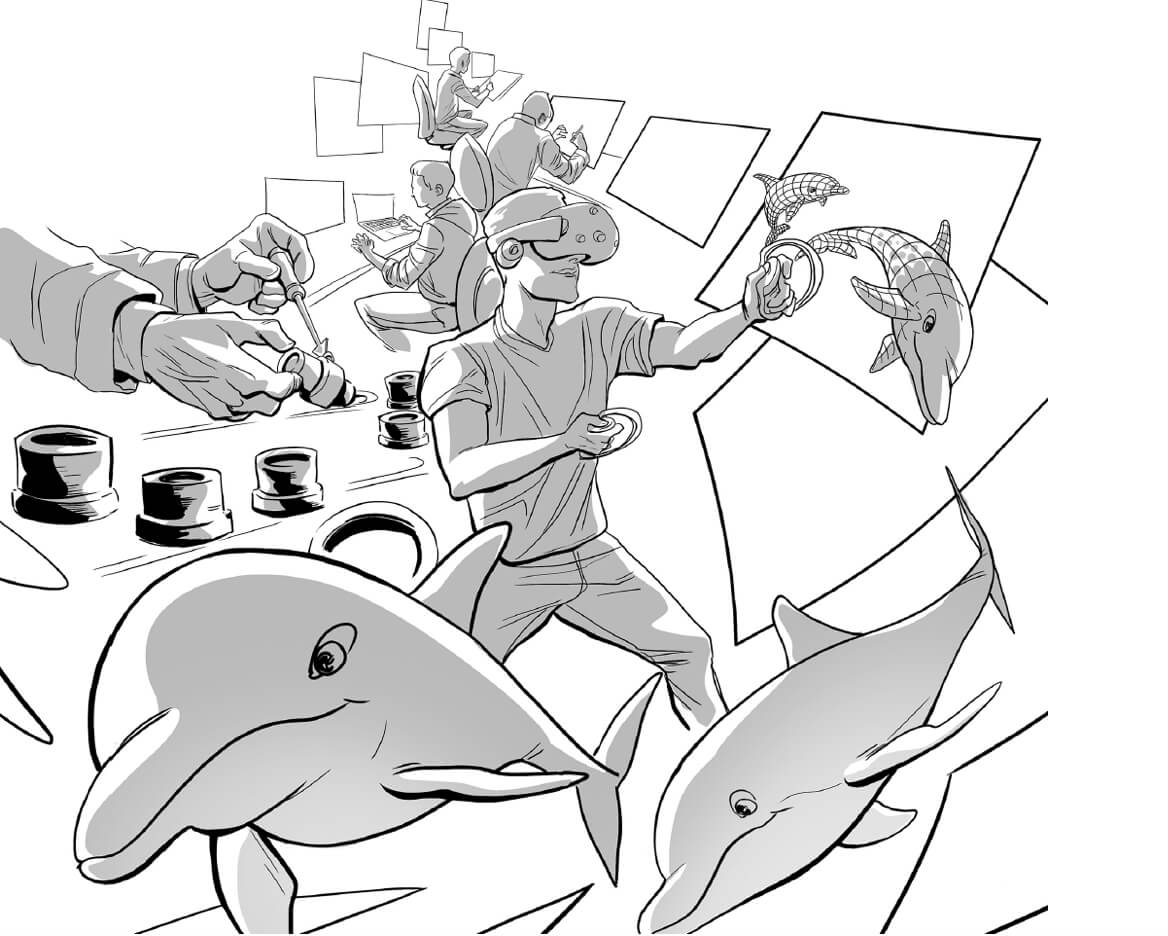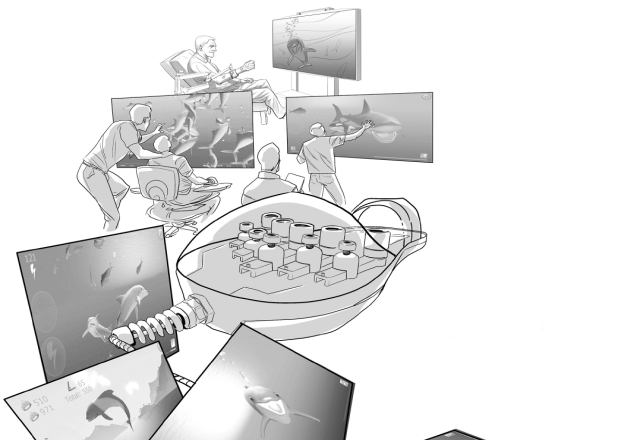Explore:
Message From the Founders | Projects | Technology | Giving | Contact Us
Our Projects
Kata’s ongoing and expanding effort is focused on changing the rehabilitation landscape in the hospital and home by creating experiences centered on complex immersive movement. Here you will find details about ongoing projects that are using a combination of unique gaming software, eye and motion tracking, force sensors, 3D printed hardware, and customized exoskeletal robotics in patients with hemiparesis after stroke, ALS and vestibular insufficiency
-
The mission of this software and hardware is to provide patients suffering from limb paralysis (caused by ailments such as ALS or spinal cord injury), but who still possess residual movements (ocular, finger), with games that map their movement onto a world of rich motor dynamics and physics. Ideally, we wish to project a patient’s residual movement into the fully dynamic movement space of a creature or vehicle. This is intended to give them back the visceral and pleasurable feeling of acceleration, velocity, and skilled movement. The games will be designed and customized to the specific disease-related constraints of the patient. That is to say, meaningful and fun experiences should be achieved with the patient’s own motor input but leaving out uncoupled extraneous input (e.g. buttons) common to most games.
An important component in this project is multiplayer gaming. Each experience will have a “consumer” parallel which can be deployed at home, on mobile devices, or on a custom-built table accessible in a library or school. In this way, we will encourage community-based interactions between gamers and patients to improve quality of life.
Game design will require that the team be provided with physician-supervised clinical observation of the anticipated spectrum of motor-impaired patients. We predict an 8-10 month development timeline, from the time of initial patient observation. This will lead to 2 fully completed games (both clinical and public versions), likely integrated with augmented and/or virtual reality.
-
The mission of this software is to provide physicians and scientists with a tool that records useful patient information garnered by sensors, with games (motor and cognitive activities) coupled with the sensors, and with the capacity to then upload the information to a cloud based storage server, which can then be accessed by clinicians and researchers to learn more about ALS. Game design will involve intuiting useful types of motion-based input that could potentially reveal clues to the onset, progression, and characterization of disease. Compelling experiences will be crafted to promote adherence.
Games will come with variants that promote and record fine motor control with or without cognitive components. Data will be uploaded to a database under the Microsoft Azure program. An interface and protocol will be developed for clinicians to initiate the program by patient ID. Software architecture for IRB/consent forms will also be developed for secure transmission.
Game design will require that the team be provided with physician-supervised clinical observation of the anticipated spectrum of ALS patients involved in the study. We anticipate a 4 month development timeline starting from initial patient observation to the development of 8 customized software components. This includes 3 fully completed games and a variety of simpler tasks. The components will integrate to form an ALS platform that can be deployed on multiple mobile devices. The platform will be constructed as an end-to-end solution with modular expansion for new games and tasks.
-
We continue our mission to develop software and hardware for acute and chronic stroke rehabilitation. Games are designed to encourage dynamic, non-task specific, continuous movements which are then mapped into physics based creature and vehicle dynamics. User input can come from a variety of trackers and/or sensors, which may include supportive assistance. Game designs will include large exploratory or physics-based environments, with unique challenges and multi-dimensional interactivity.
Development for 2017 will involve a deeper variety of spherical controlled movement games including exploration and other objectives outside of dogfighting. In addition, we will develop new planar control games, with rich, level-based, interactive physics environments. Customized hardware peripherals are under development for use as input and supportive devices. We intend to address multiple stages of the stroke rehabilitation pipeline, including experiences catered to in-patient, out-patient, and at-home rehabilitation, both acute and chronic.
Multiplayer support for patient-therapist, and patient-family interaction will also be developed.
-
1. Connect patients with members of the community. Especially for palliative games (advanced ALS and spinal cord injury), clinical games will include a network multiplayer mode so that patients can play with members of the community/public. A press campaign will promote awareness of the goal of connecting people to patients, for improving their quality of life and wellness. These types of rich, fun, multiplayer experiences are not afforded to patients today.
2. Provide patients with the best possible entertainment experiences. By deploying our games on the commercial marketplace, we ensure our patient games meet a requisite level of excellence and playability. Commercial acceptance is a requisite to offering a game to a patient. Video game consumers provide useful design feedback through online forums and support channels. They often uncover critical issues and provide useful suggestions.
Interactive Library Display
The mission of the library table is to create a piece of furniture integrated with a computer, high resolution touch screen, and software that:
- Serves as a normal study table.
- Entices a passer-by to stop by the table through table hardware and software design.
- Integrates tastefully with library decor.
- Compels usage by game design.
- Connects table users with patients through network multiplayer games.
- Provides library collection information.
- Compels local multiplayer gaming.
- Enhance and integrate with the library visualization wall.
Objectives 1-3 are accomplished by meticulous, professional, woodworking and craftsmanship to create playful themes and designs. The development timeline for table completion and 2 games (vehicle and sharks) was 5 months. We anticipate 6-10 months for full integration with patient-based multiplayer experiences (sea dragons).The mission of the library visualization wall /display is to create software running on a 4k (or above) 85 inch display that:
- Entices a passer-by to interact with the wall through software design.
- Integrates tastefully with library decor.
- Compels usage by game design.
- Connects users with patients through network multiplayer games.
- Provides library collection information.
- Compels local multiplayer gaming, with second display or table.
- Enhances and integrates with the library table.
-
The mission of the library table is to create a piece of furniture integrated with a computer, high resolution touch screen, and software that:
- Serves as a normal study table.
- Entices a passer-by to stop by the table through table hardware and software design.
- Integrates tastefully with library decor.
- Compels usage by game design.
- Connects table users with patients through network multiplayer games.
- Provides library collection information.
- Compels local multiplayer gaming.
- Enhance and integrate with the library visualization wall.
Objectives 1-3 are accomplished by meticulous, professional, woodworking and craftsmanship to create playful themes and designs. The development timeline for table completion and 2 games (vehicle and sharks) was 5 months. We anticipate 6-10 months for full integration with patient-based multiplayer experiences (sea dragons).
The mission of the library visualization wall /display is to create software running on a 4k (or above) 85 inch display that:
- Entices a passer-by to interact with the wall through software design.
- Integrates tastefully with library decor.
- Compels usage by game design.
- Connects users with patients through network multiplayer games.
- Provides library collection information.
- Compels local multiplayer gaming, with second display or table.
- Enhances and integrates with the library table.
-
The mission of this software and hardware is to provide patients suffering from vestibular disorders with therapeutic rehabilitative games and experiences to allow them to more quickly and effectively compensate for their vestibulopathy and thereby regain better balance. The gaming experiences will likely involve eye and head tracking, where control of an in-game vehicle or creature requires fixed gaze with simultaneous head movement. The games may also require simultaneous use of a foot-based joystick, which serves both as a control input and an external peripheral requiring coordination and balance. The goal is to provide a challenging multi-tasking game that mimics real-life situations that combine balance and movement.
Game design will require that the team be provided with physician-supervised clinical observation of the anticipated spectrum of patients with abnormal VORs and impaired balance. We predict a 5-8 month development timeline.
Contact Us
Omar Ahmad, PhD
Director of Kata, Chief Designer, Simulation Engineer and Animator
Email: [email protected]

